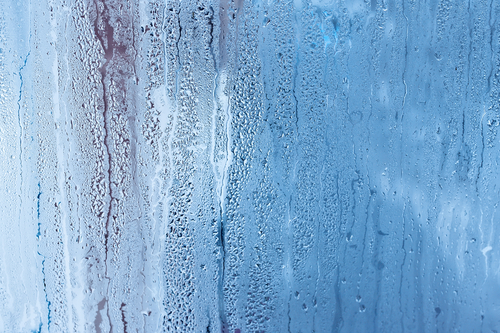While some might think humidity is only a problem in the summer, the wrong amount of humidity in a facility can be an issue year-round. Facilities professionals should therefore ensure their facilities have the correct amount of humidity not just for the comfort of their occupants but also to avoid damage to the building and the materials in it, such as electronics that cannot be in extremely high or extremely low humidity settings due to their internal components. Doing so can save on both aggravation and costs.

What Is Humidity?
Humidity is usually measured using “relative humidity,” which looks at the percentage of water vapor at a specific temperature. According to the National Weather Service, hotter air can hold more water vapor, while colder air can hold less.
Problems with High Humidity
Facilities professionals often deal with problems of high humidity during the warmer months. According to a U.S. Environmental Protection Agency (EPA) report, some of the damage the moisture from high humidity can cause in buildings can include:
- The growth of molds, bacteria, and insect pests like carpenter ants on building materials and heating, ventilation, and air conditioning (HVAC) systems.
- Chemical reactions that could corrode building materials, like structural fasteners and wiring, and weaken adhesives found in flooring and roofing materials.
- Water-soluble building materials, like gypsum board, can return to solution.
- Wooden materials can warp, swell, or rot.
- Freeze-thaw cycles and subsurface salt deposition can damage brick and concrete.
- Paints and varnishes can be damaged.
Facility occupants exposed to damp conditions due to high humidity can experience:
- Upper respiratory symptoms such as nasal and throat issues, which can include shortness of breath, coughing, and wheezing
- Asthma symptoms in people who already have asthma
Problems with Low Humidity
Low humidity is often a problem during colder months. According to a report by the Air-Conditioning, Heating, and Refrigeration Institute (AHRI), aspects of buildings both inside and out that can be damaged by low humidity can include:
- Paper
- Leather
- Books
- Paintings
- Wood products
Specifically, damages could include cracking, dry rot, warping, gluing failures, and curling of stock.
Facility occupants exposed to dry conditions with low humidity can experience:
- Skin dryness, eye irritation, and static electricity
- Drying nasal passages and weakening of the respiratory system
Solutions to Fixing Humidity Levels
According to the AHRI, the optical humidity level is between 30% and 60%. The organization recommends that facilities professionals consider several solutions to bring humidity to the correct amount, including:
Increasing humidity through steam technologies. Water is heated in a reservoir, and the water is converted to steam. These technologies do not greatly impact a building’s temperature, and examples include:
- Gas-fired—Uses a gas burner to heat humification water. The National Institute of Health says this is the most economical way to add humidity to a facility.
- Electric—Used when a source of steam is not available and can include electrodes, through which boiled water passes an electrical current, and resistors, which create steam by transferring heat from the resistance heater elements to the water.
- Building steam with centralized steam or steam to steam.
Increasing humidity through diabatic technologies. The AHRI says these reduce heat through a change in air pressure and have a cooling effect on temperature. Examples include:
- Wetted media—provide evaporative cooling and humidification
- Centrifugal—has a multidirectional fogging head used for storing fruits and vegetables
- Ultrasonic—a cool mist humidifier without a heating element
- Medium pressure—continuous-flow water spray humidifier
- High-pressure room duct—provides humidification in multiple zones for larger buildings
- Compressed air—adds atoms to water using compressed air with self-cleaning nozzles
According to the Mayo Clinic, humidity can be decreased through:
- Air conditioners or by setting central air or HVAC units to cool
- Dehumidifiers, which collect excess moisture from the air
Having the appropriate humidity levels is important for the health of your facility, its resources, and its occupants. Facilities professionals who do not have HVAC experience should reach out to HVAC professionals about what solution is best for them and their facilities.
